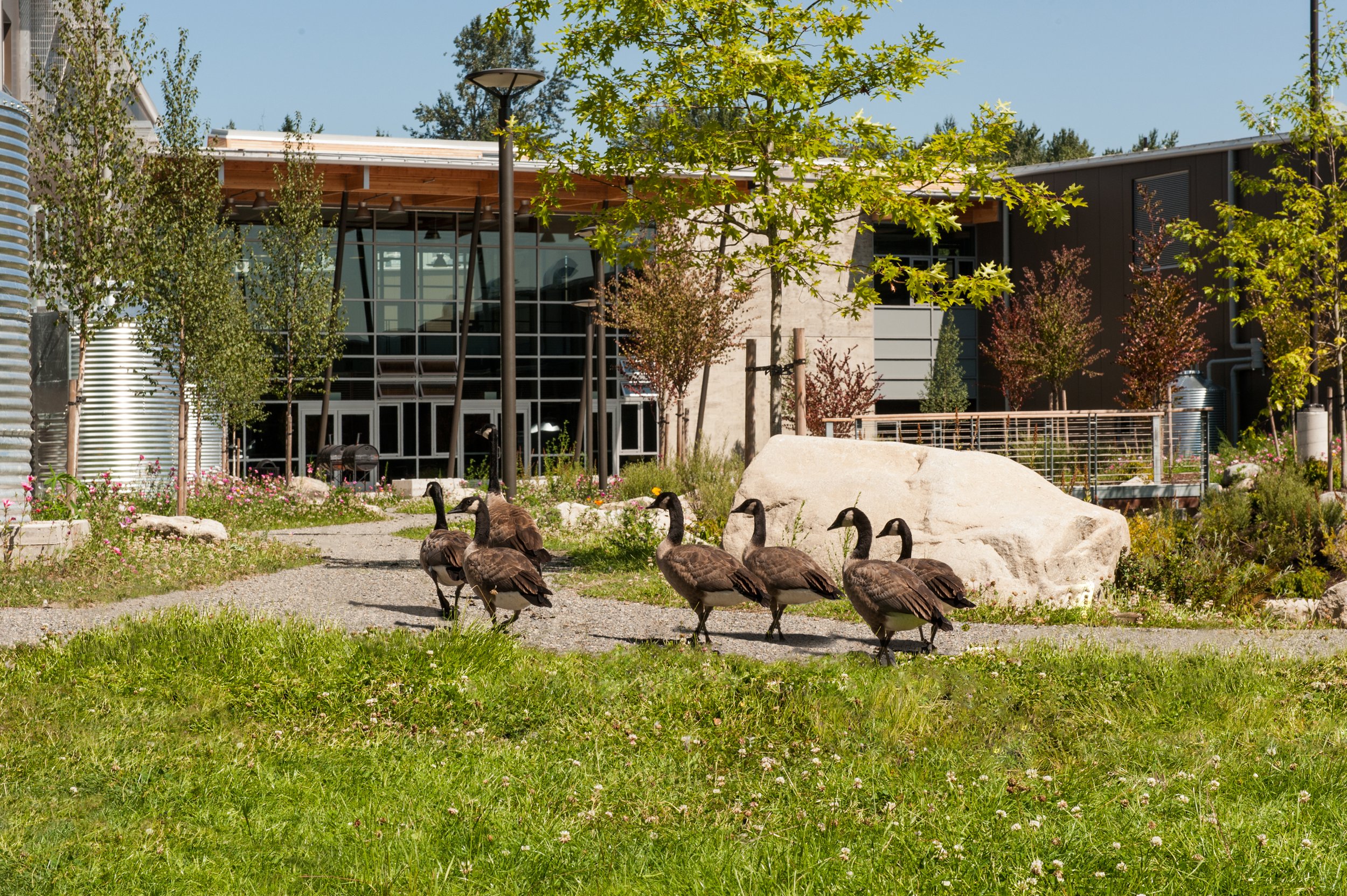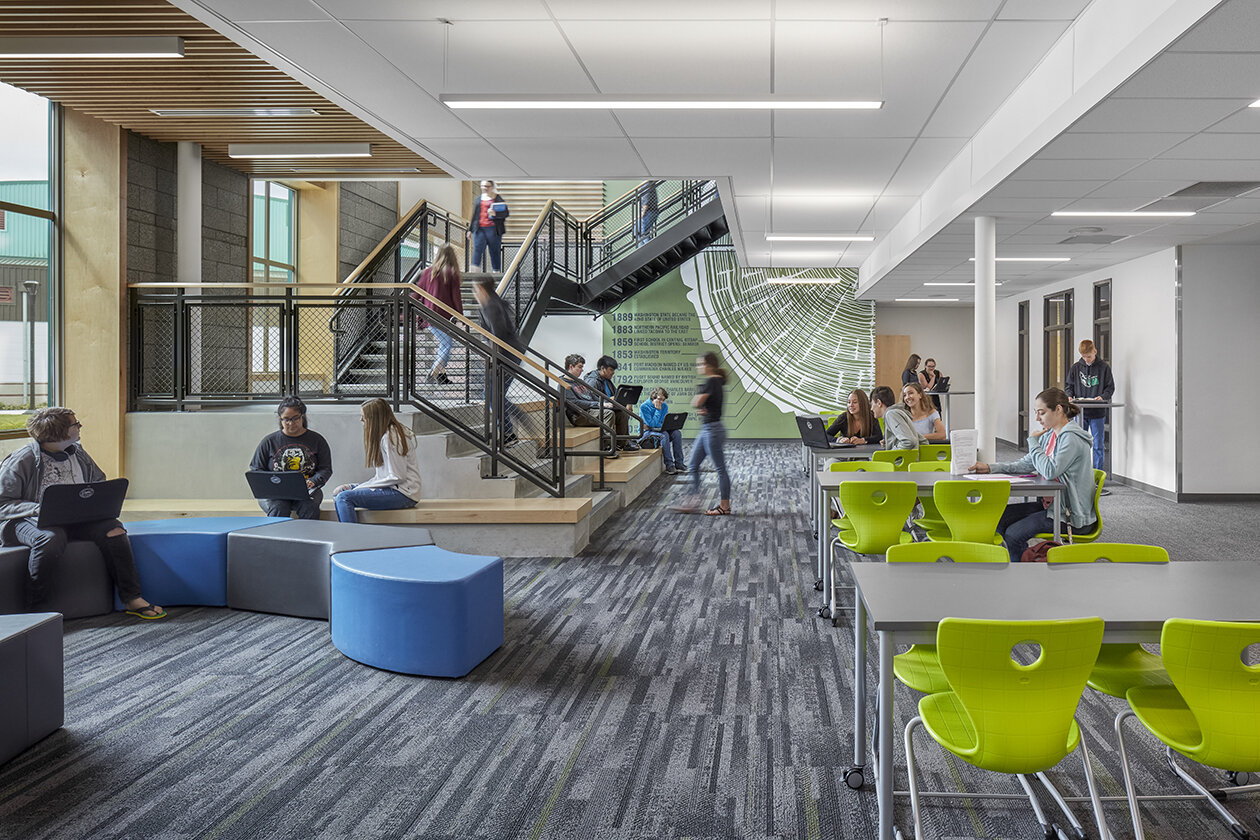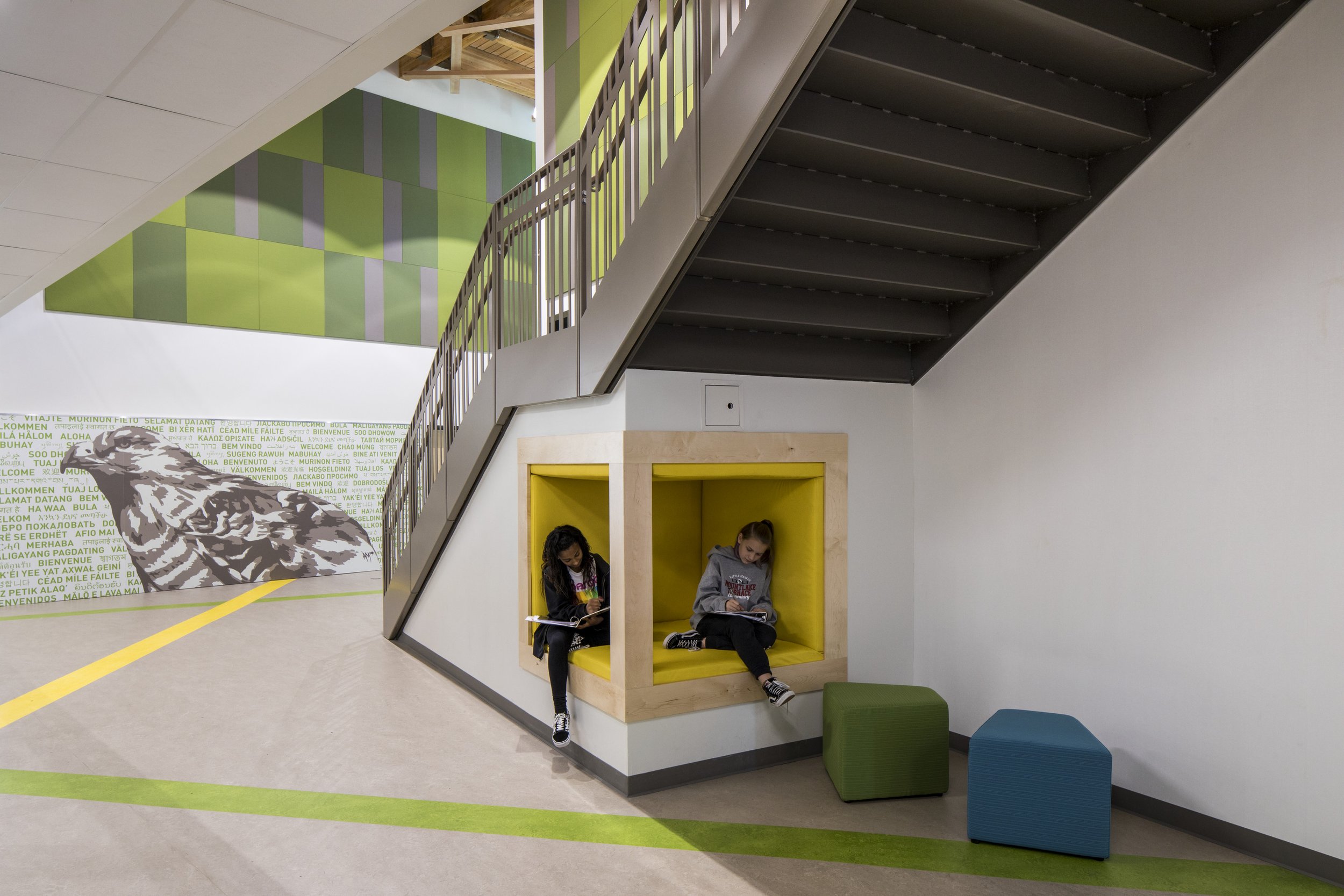Sustainability
SUSTAINABILITY
Green buildings are the foundation of healthy, thriving communities.
Green buildings are foundational to healthy, thriving communities.
At Bassetti, we don't view sustainability as a linear task to be checked off a list. Instead, it is an opportunity to demonstrate our continuous commitment to integrating climate-friendly solutions at every design phase while planning for ongoing maintenance and future adaptability. As a premier design firm of K-12 architecture in the Pacific Northwest, we design sustainable buildings as an investment in our communities and a commitment to our future.
Bassetti is a signatory to the AIA 2030 Commitment to Energy Efficiency targets. Teams set energy performance objectives at the start of design and budget projects to include the renewable energy production (e.g., PV panels) necessary to hit those targets.
"Global building construction and operation contribute as much as 40% of total carbon dioxide emissions."
The buildings we design must do more than provide shelter; they must serve as resilient fortifications against increasingly frequent extreme weather events. As designers, we recognize our responsibility to create a built environment that is energy efficient, helps mitigate climate change, and enhances the health and well-being of all building occupants. Bassetti is dedicated to pursuing regenerative building solutions and minimizing our contributions to climate change as much as possible. We aim to create buildings that enhance local communities by prioritizing the reuse, renovation, and restoration of existing and historic buildings. Our commitments extend to restoring natural habitats, advancing occupant health, and positively impacting future generations. Our vision statement, "Fostering healthy communities through learning and design," encapsulates these commitments.
The need for a regenerative built environment is more urgent than ever. In recognition of this, Bassetti has signed the AIA 2030 Commitment to establish energy efficiency targets and report on our progress. Our project teams set energy performance targets at the beginning of the design process and track performance throughout. Our goal is for all our projects to achieve Net Zero Energy by 2030.
Selection of sustainable projects










